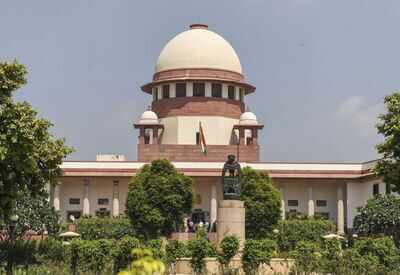
NEW DELHI: Since 2016, the government has notified appointment of 459 judges for various high courts and 27 in the Supreme Court, yet the high courts continue to have nearly 400 judges position vacant against a sanctioned strength of 1,079. A lot has to do with pending finalisation of memorandum of procedure (MoP) that provides for eligibility criteria and guidelines for appointment to the higher judiciary.
Hundreds of recommendations are pending with the government after they have been recommended by HC collegiums, many of them held back even after being approved by the Supreme Court collegium as the government has expressed reservations.
Union law minister Ravi Shankar Prasad, in a written reply to a question in Lok Sabha on Thursday, said that the government has conveyed the need to make improvement on the draft MoP to the secretary general of the Supreme Court. These suggestions are pending with the apex court since July 2017. Though there is no final guideline at present, the government has been notifying appointments as per recommendations of the apex court collegium, except in cases where it has strong reservations over the choices.
On March 10, 2017, five-judge SC collegium — comprising of then CJI J S Khehar, Justices Dipak Misra, J Chelameswar, Ranjan Gogoi and Madan B Lokur — had unanimously finalised the MoP and sent it to the Centre where it had clearly laid down eligibility criteria. The MoP was finalised in compliance with an order passed by the constitution bench of the SC, dated December 16, 2015, in the NJAC (National Judicial Appointments Commission) case.
However, in another judgement dated July 4, 2017 the apex court in a suo moto contempt proceeding against a judge of the Calcutta High Court, underlined the need to revisit the process of selection and appointment of judges to the constitutional courts. “The government has conveyed the need to make improvement on the draft MoP to the secretary general of the SC vide letter dated July 11, 2017,” Prasad said. The matter is pending since then.
Hundreds of recommendations are pending with the government after they have been recommended by HC collegiums, many of them held back even after being approved by the Supreme Court collegium as the government has expressed reservations.
Union law minister Ravi Shankar Prasad, in a written reply to a question in Lok Sabha on Thursday, said that the government has conveyed the need to make improvement on the draft MoP to the secretary general of the Supreme Court. These suggestions are pending with the apex court since July 2017. Though there is no final guideline at present, the government has been notifying appointments as per recommendations of the apex court collegium, except in cases where it has strong reservations over the choices.
On March 10, 2017, five-judge SC collegium — comprising of then CJI J S Khehar, Justices Dipak Misra, J Chelameswar, Ranjan Gogoi and Madan B Lokur — had unanimously finalised the MoP and sent it to the Centre where it had clearly laid down eligibility criteria. The MoP was finalised in compliance with an order passed by the constitution bench of the SC, dated December 16, 2015, in the NJAC (National Judicial Appointments Commission) case.
However, in another judgement dated July 4, 2017 the apex court in a suo moto contempt proceeding against a judge of the Calcutta High Court, underlined the need to revisit the process of selection and appointment of judges to the constitutional courts. “The government has conveyed the need to make improvement on the draft MoP to the secretary general of the SC vide letter dated July 11, 2017,” Prasad said. The matter is pending since then.
Download The Times of India News App for Latest India News.
Coronavirus outbreak
Trending Topics
LATEST VIDEOS
More from TOI
Navbharat Times
Featured Today in Travel
Quick Links
Coronavirus in MumbaiCoronavirus in KolkataCoronavirus in HyderabadCoronavirus in DelhiCoronavirus in BangaloreCoronavirus symptomsCoronavirus in IndiaWhat is CoronavirusCoronavirus NewsSolar EclipseNPRWhat is NRCCAB BillCAB and NRCRTI BillPodcast newsLok SabhaShiv SenaYSRCPCongressBJP newsUIDAIIndian ArmyISRO newsSupreme Court
Get the app









